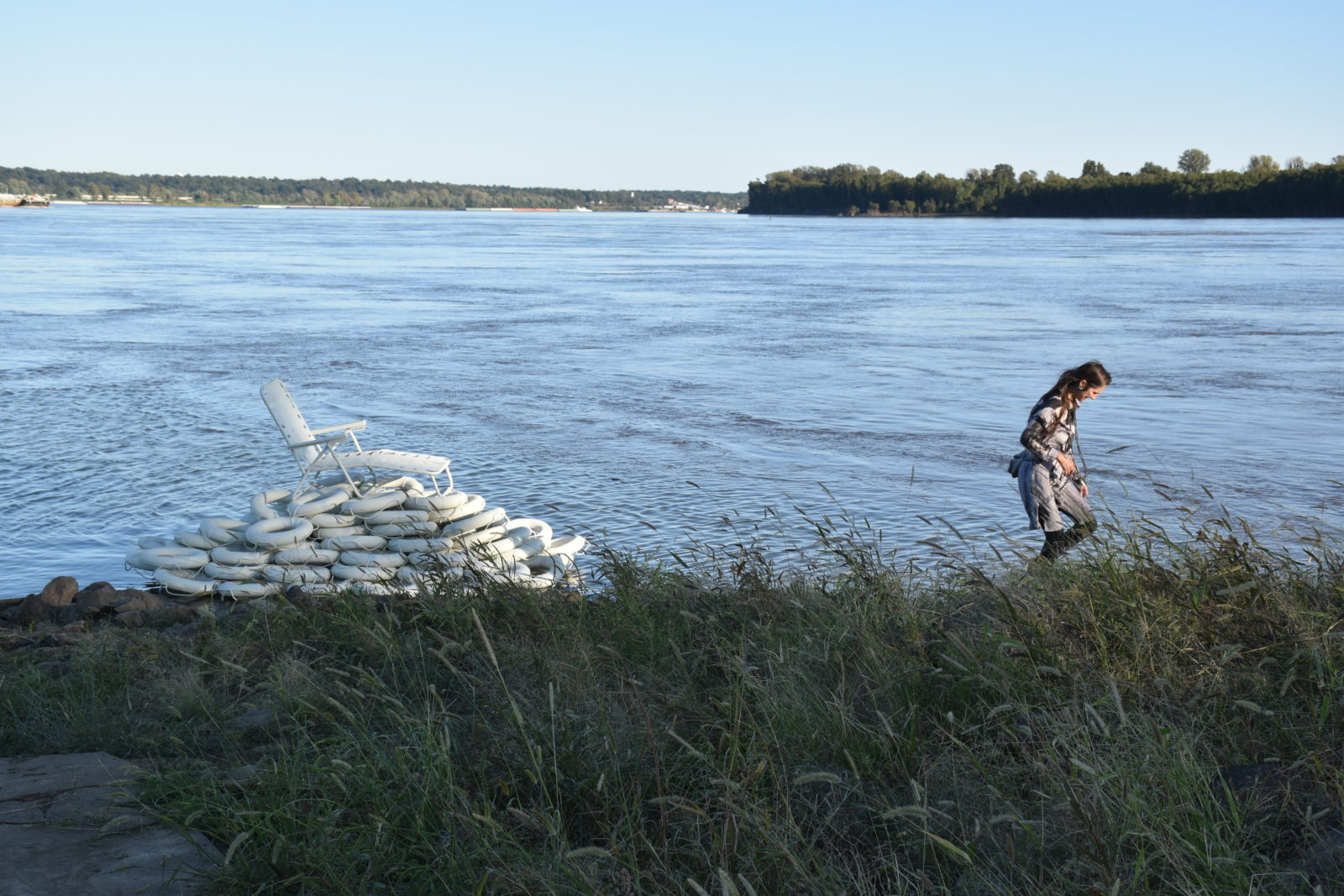A Singularity of Time and Place
Sunset on the confluence
On a late afternoon during Field Station 4 at the confluence where the Ohio and Mississippi Rivers meet, Claire Pentecost contemplates the region’s entangled relationship of time and place.
Jenny Kendler and Jeremy Bolen’s sculpture "Lounging through the Flood."
For the last events of Field Station 4: Confluence Ecologies, we gathered in the late afternoon at the confluence of the Ohio and Mississippi Rivers, a point of land called Fort Defiance Park. With the help of many hands, artists Jenny Kendler and Jeremy Bolen launched a ghostly craft made from a pile of ash-white life preservers, its summit providing just enough space for a lounge chair to rest, open for the taking. Tethered to a rope and bobbing on the confluence waters, Lounging through the Flood might have been simply an indictment of those—us—who cast themselves as passive witnesses to the deluge. But it was equally a query: Will we, who sit on a cache of life-preserving strategies, get off our elevated roost to actually use them?
But for that moment, witnesses we were, and as we stood assembled at the point, looking over the turbulent waters, we became enmeshed in waves of sound from the inland direction. Machine and insect noises droned together in pulsing hums, a reverie at once alien and familiar. The sweeping mass of sound grew larger and more complex, layering too many elements to identify. A woman’s voice joined the otherwise wordless chorus, reading from a text that, despite the voice’s steady pacing and clarity, was impossible to decipher as a whole. The tone, however, was unmistakable: biblical, incantatory, prophetic, mournful, cautionary.
We were hearing a sonic composition by Brian Kirkbride, based on a song by the electro pop band the Knife and emanating from speakers mounted on the two-story monument at the center of the park—a ship-like structure with its own elevated prow. Artist and writer Kayla Anderson stood on the upper platform reading, into a microphone, a text chosen by fellow artists Beate Geissler and Oliver Sann. It was an excerpt from Hermann Broch’s majestic and plutonian novel The Death of Virgil, an evocation of the last hours of the poet who wrote of plurima mortis imago—the multiform image of death. For some time we lingered aimlessly at the point, wavering between the spectral voyager going nowhere on the river and the source of elegiac reverberation. Suddenly, the power went down and, after mere seconds of silence, Anderson began to sing to us. In an effort to hear the words, everyone turned and began moving toward the voice, as if in a trance … “We share our mother’s health / It is what we’ve been dealt” … Deprived now of electric amplification, we were dropped into the singularity of time and place: this time, this place—sunset on the confluence. And it was just us, heirs to the culture most determined to live all alone on this planet.

